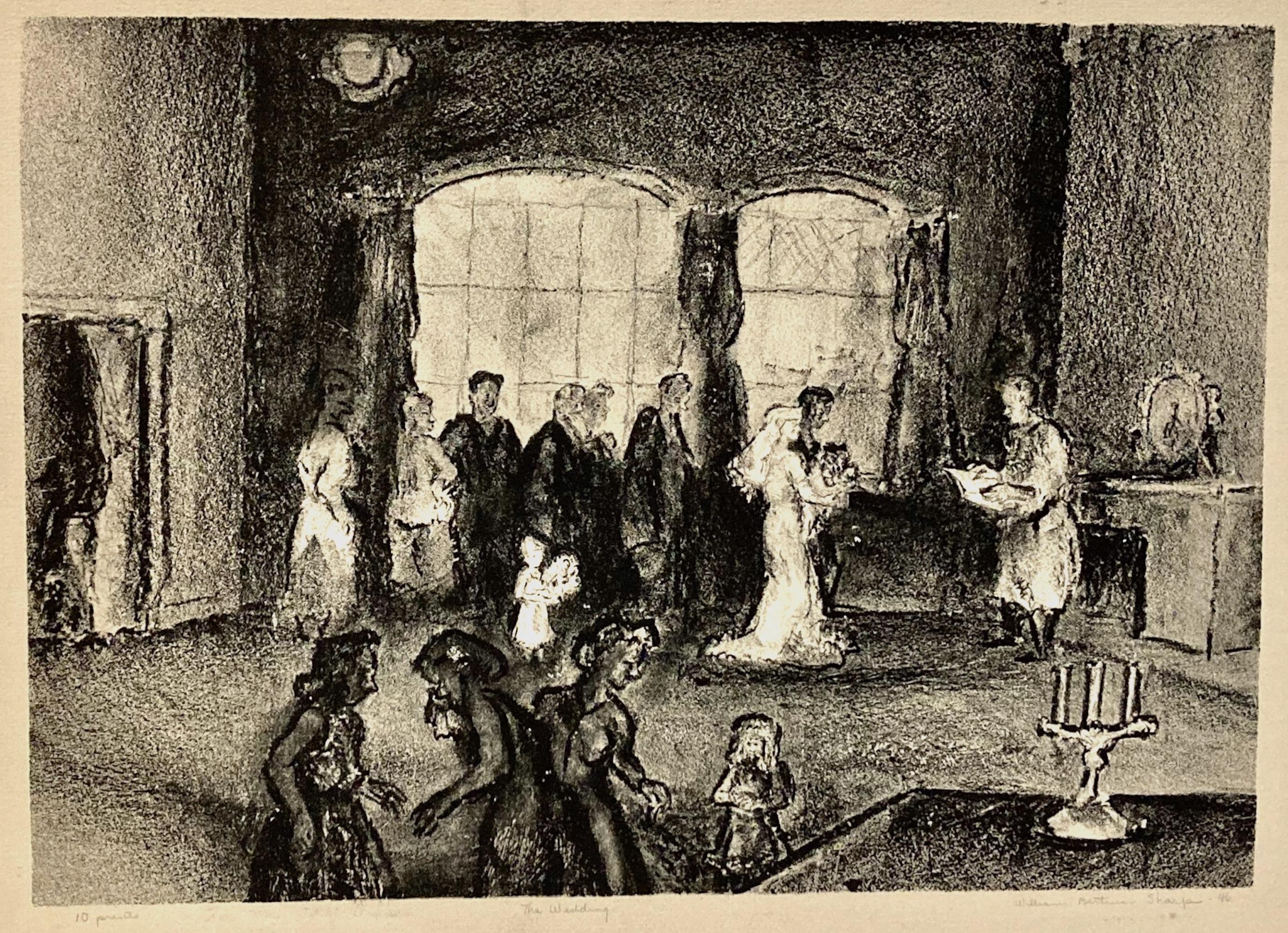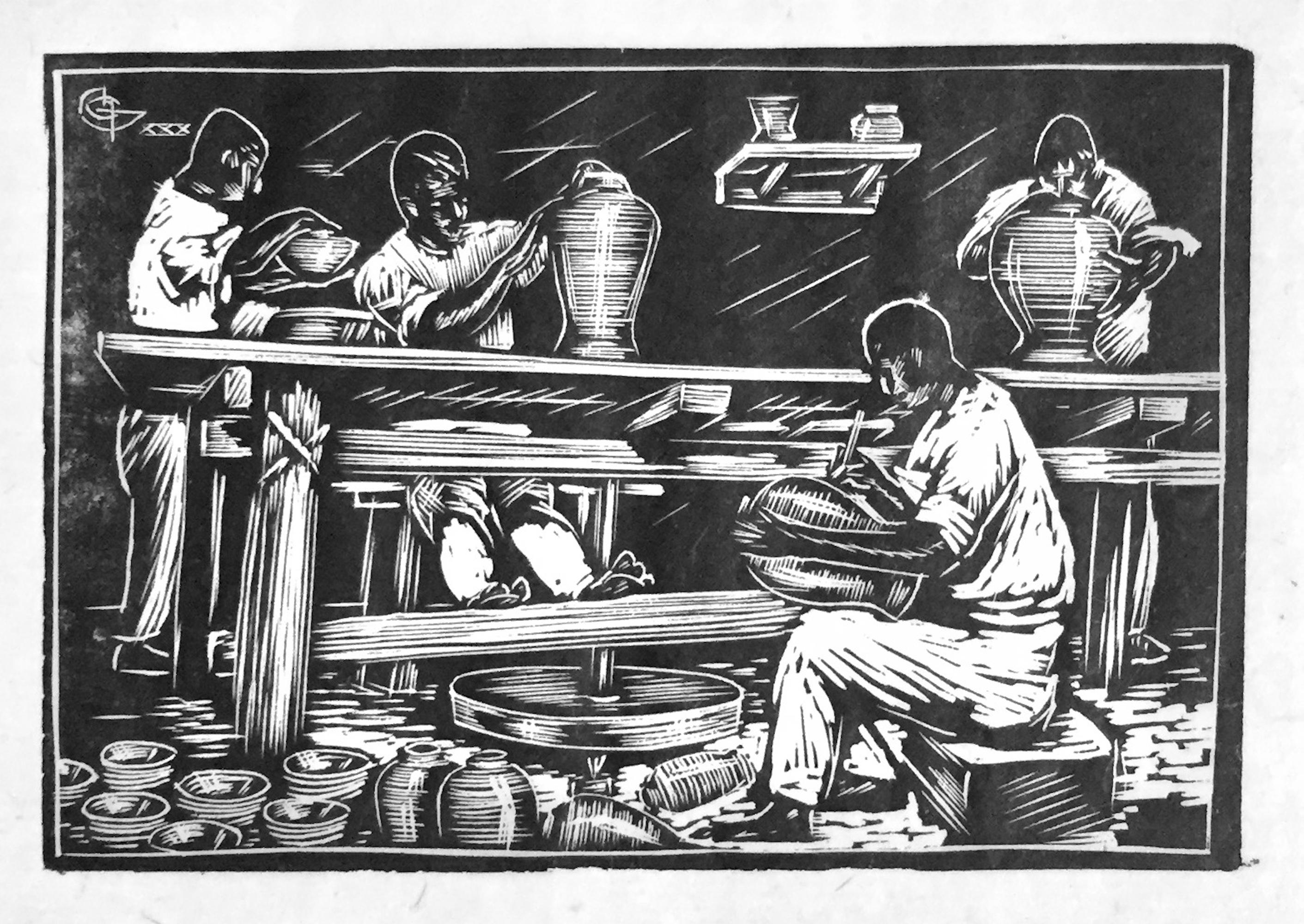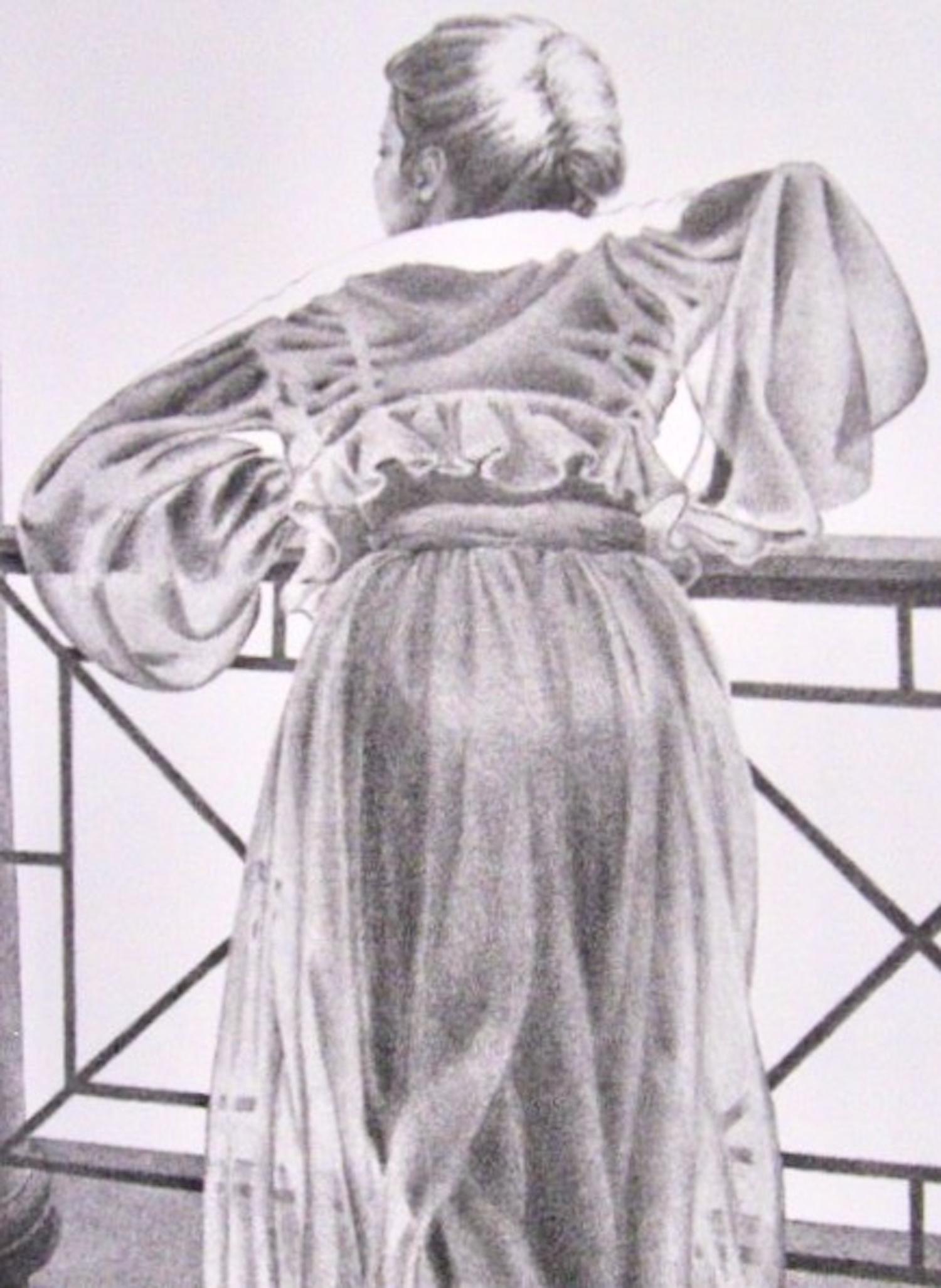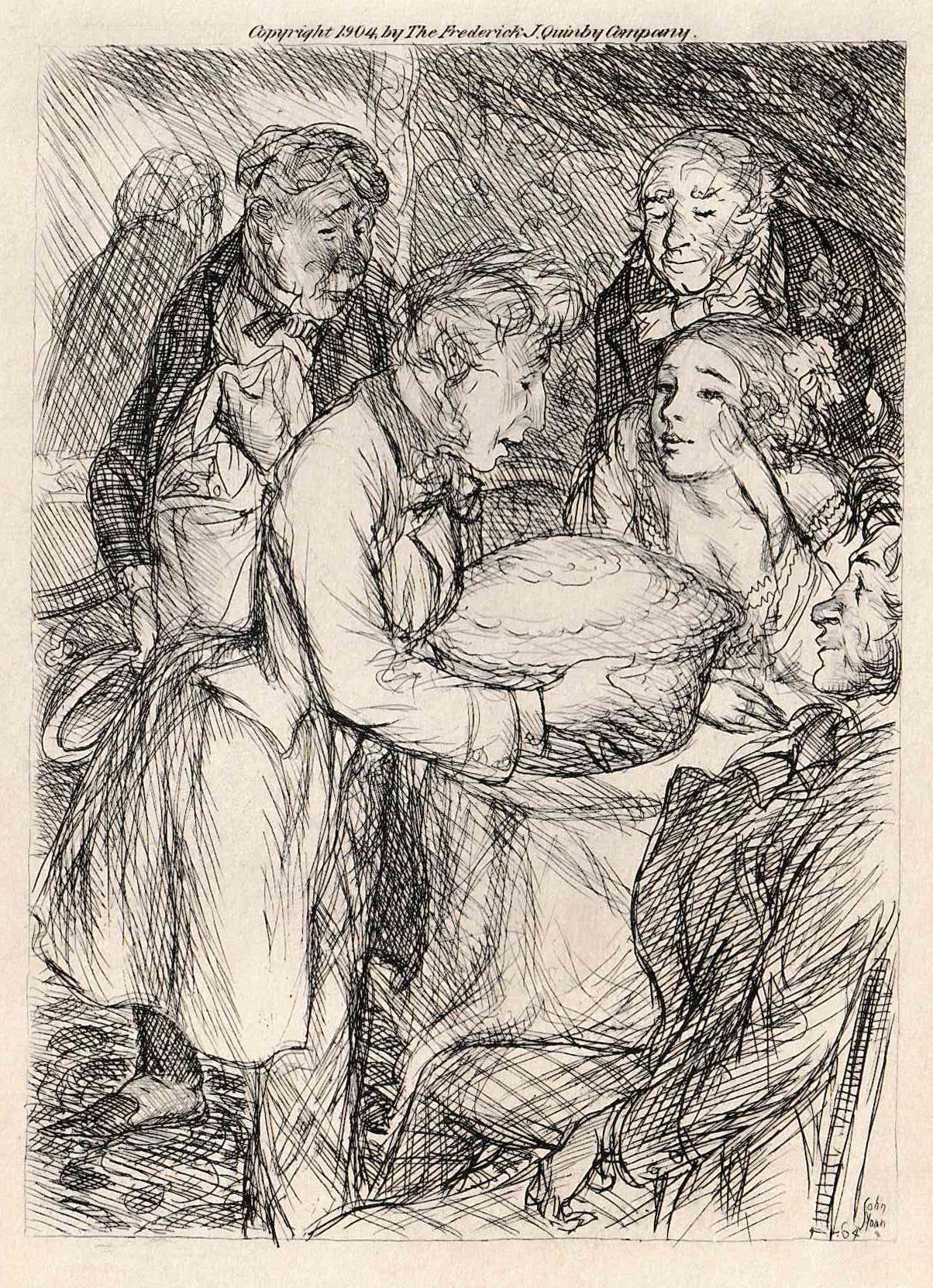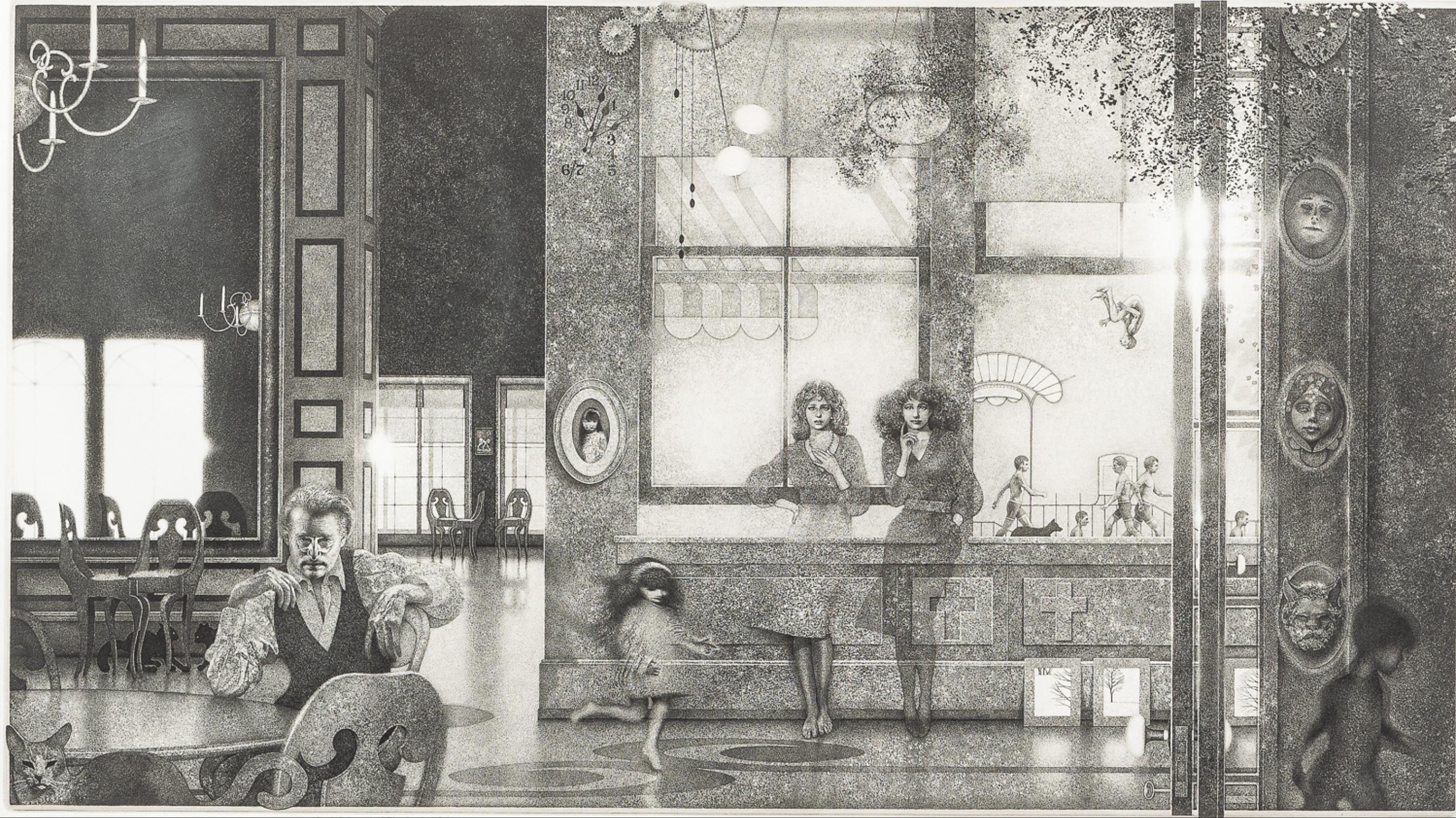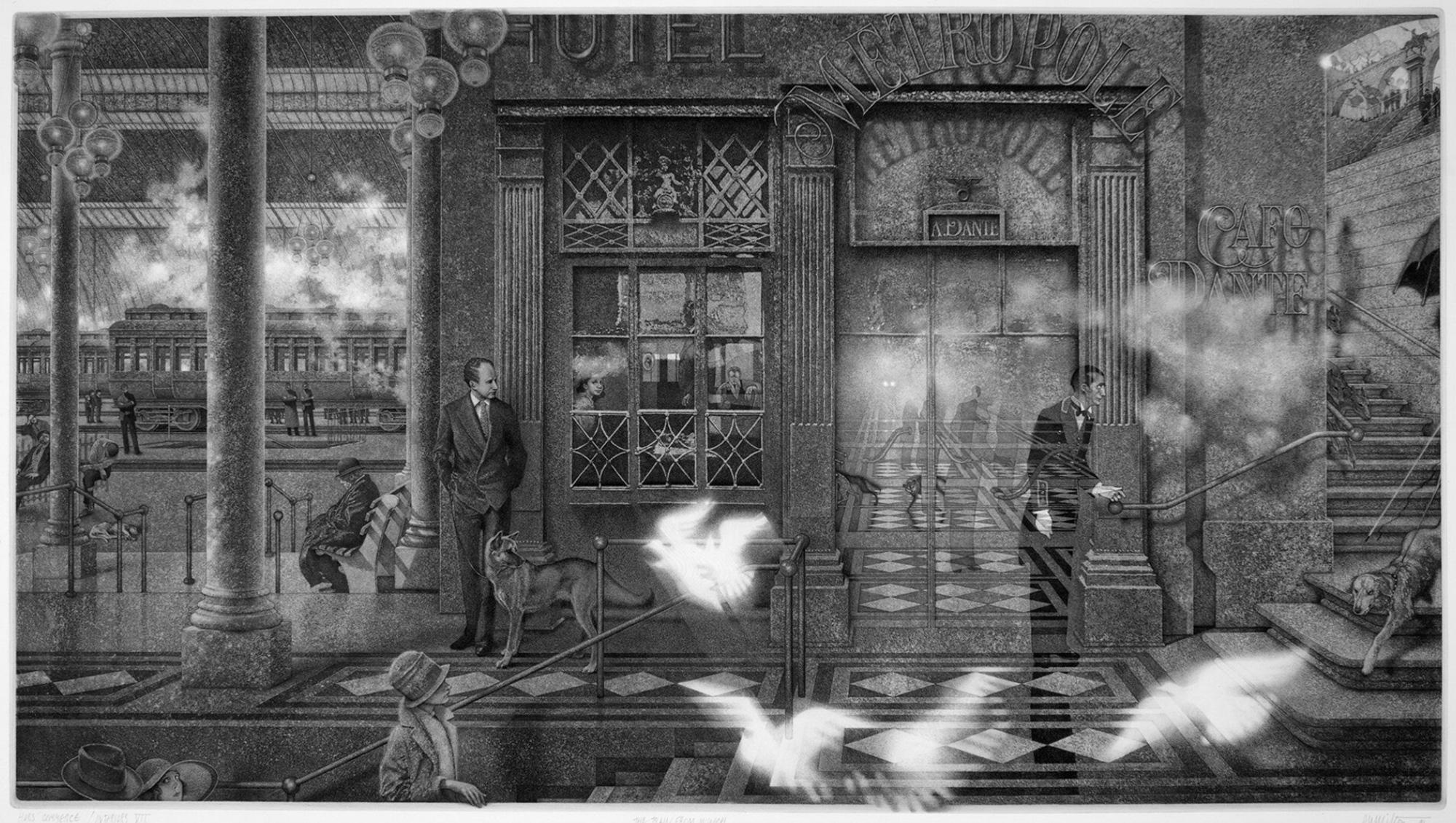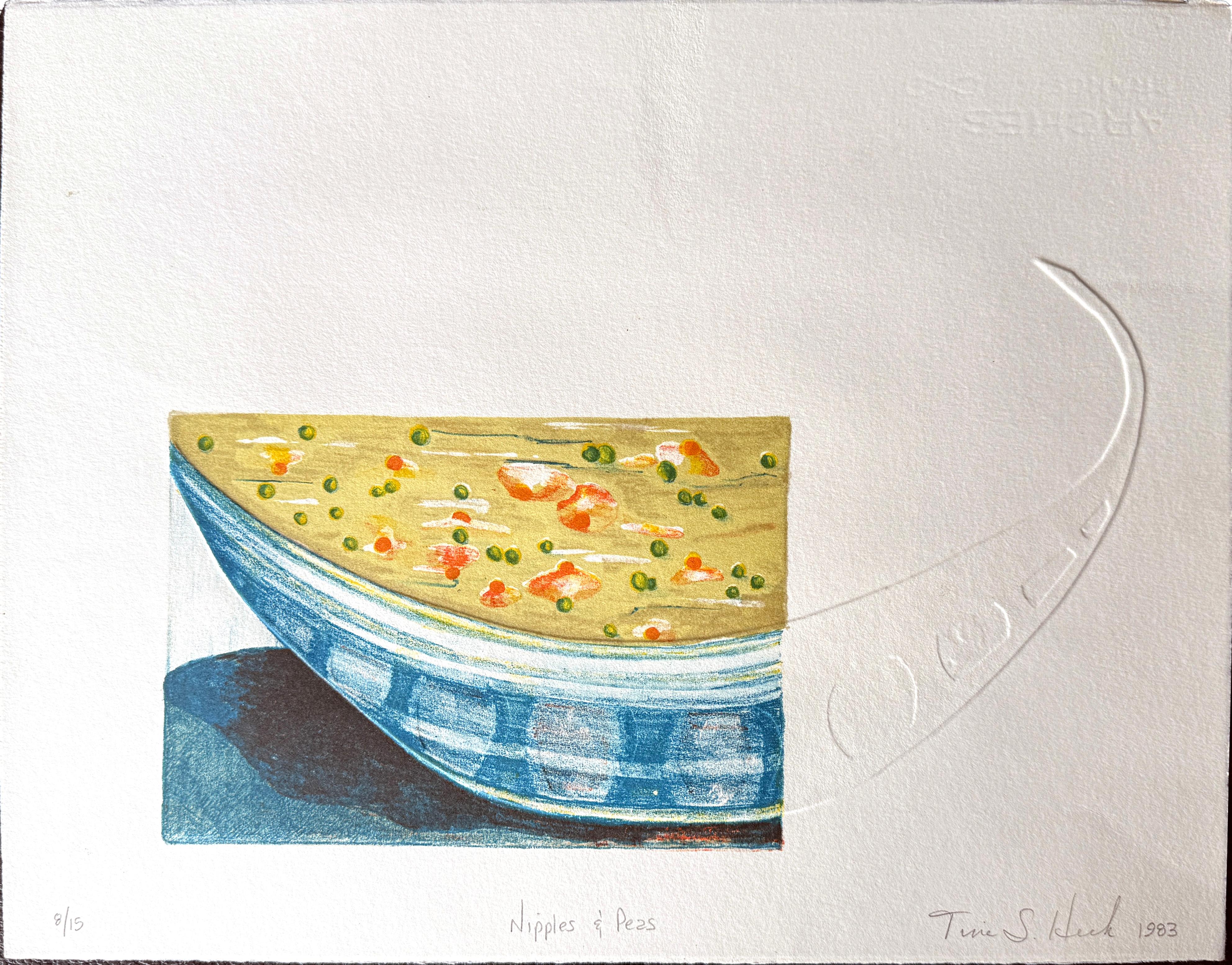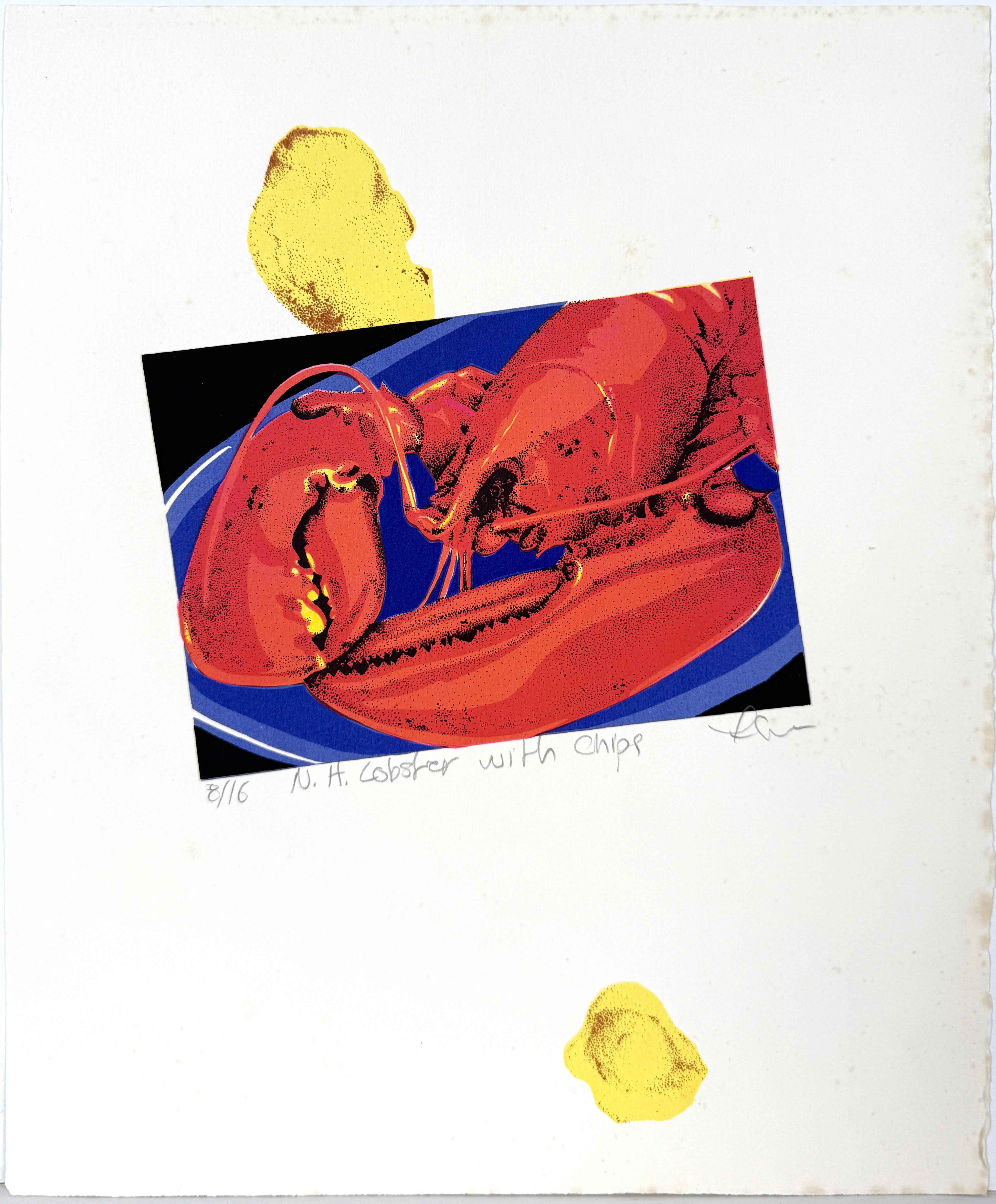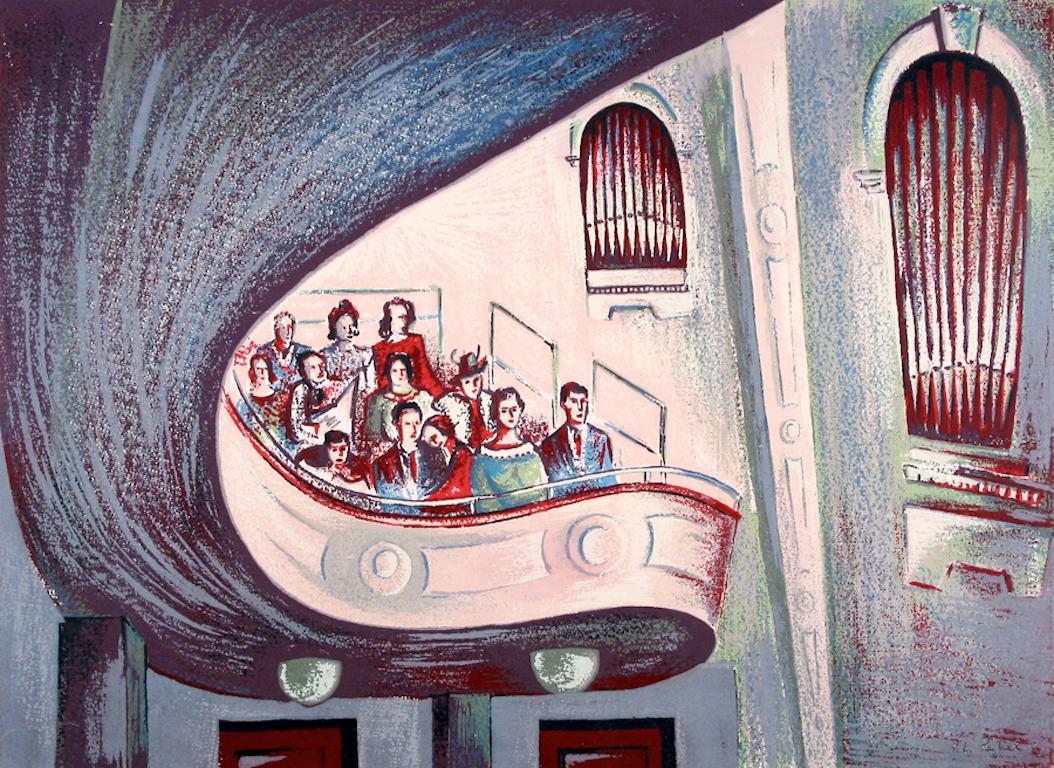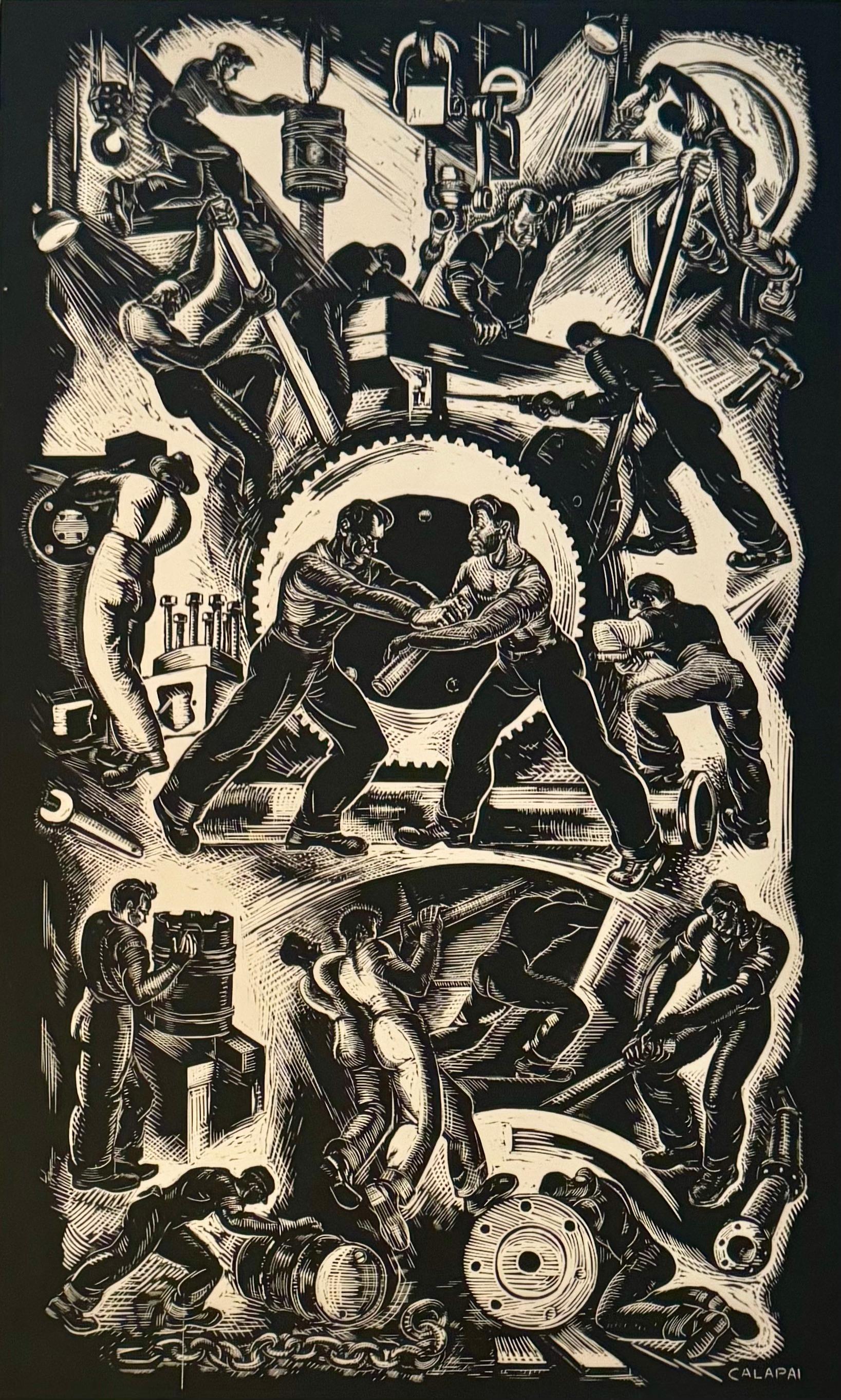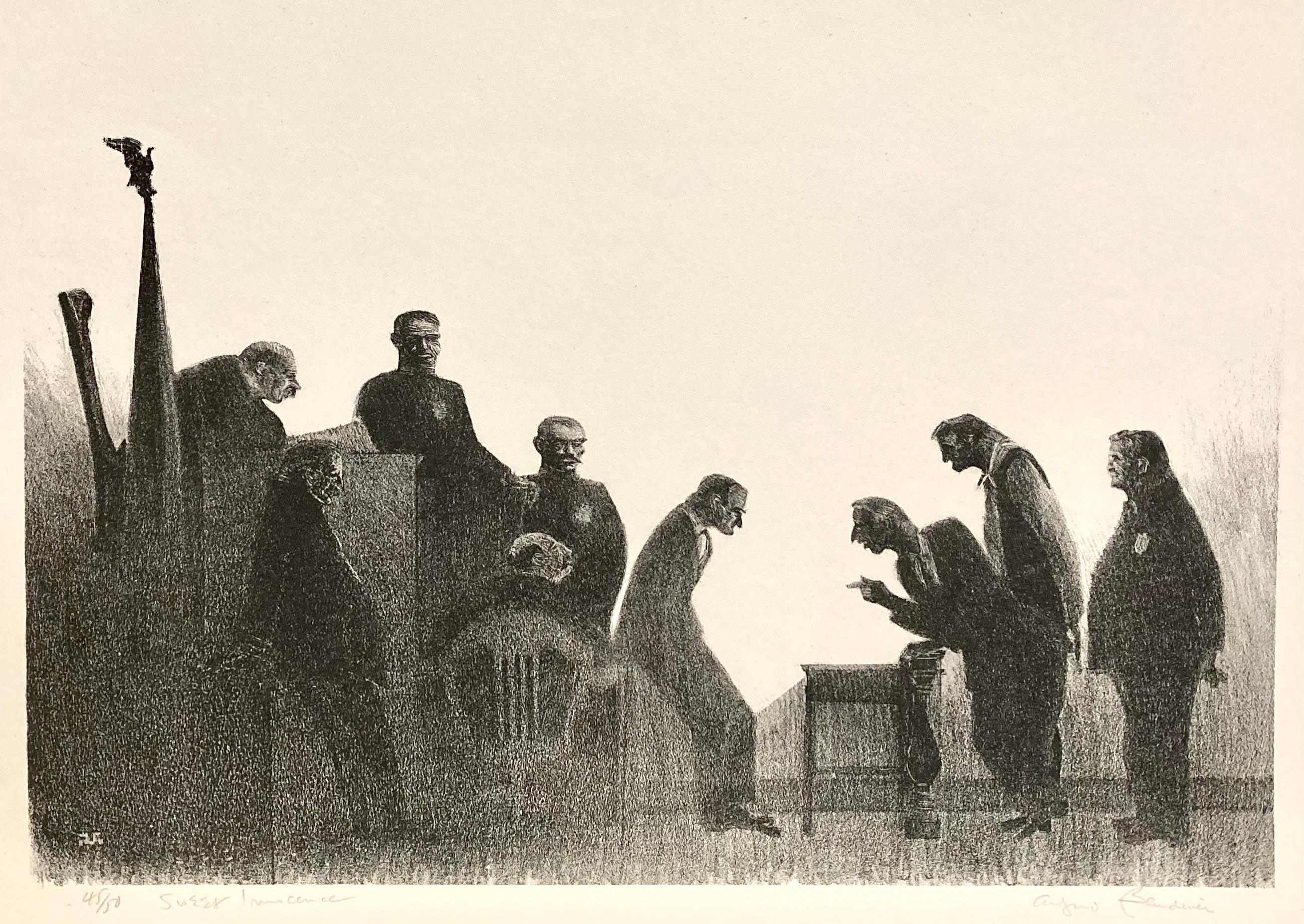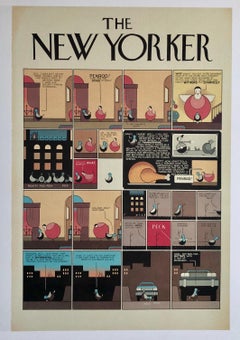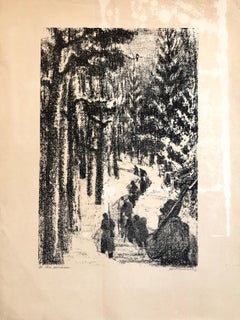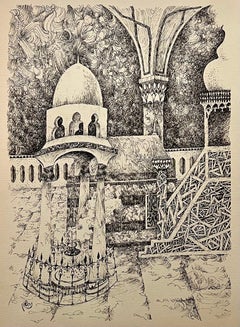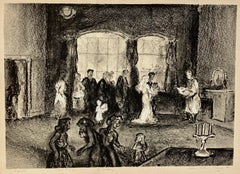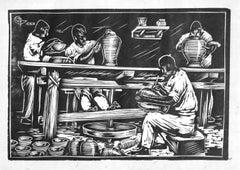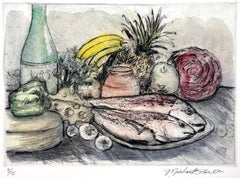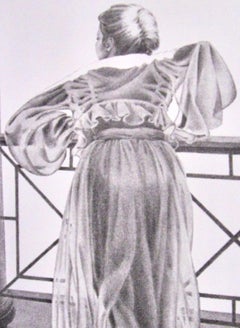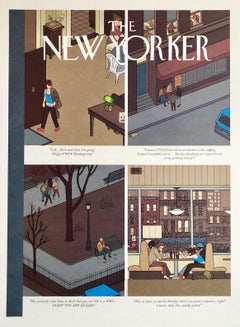
Chris Ware New Yorker Cartoonist Limited Edition Thanksgiving Print NYC
View Similar Items
Want more images or videos?
Request additional images or videos from the seller
1 of 12
Chris WareChris Ware New Yorker Cartoonist Limited Edition Thanksgiving Print NYC2006
2006
$250List Price
About the Item
- Creator:Chris Ware (1967)
- Creation Year:2006
- Dimensions:Height: 20 in (50.8 cm)Width: 15 in (38.1 cm)
- Movement & Style:
- Period:
- Condition:
- Gallery Location:Surfside, FL
- Reference Number:1stDibs: LU3823499071
About the Seller
4.9
Platinum Seller
Premium sellers with a 4.7+ rating and 24-hour response times
Established in 1995
1stDibs seller since 2014
1,792 sales on 1stDibs
Authenticity Guarantee
In the unlikely event there’s an issue with an item’s authenticity, contact us within 1 year for a full refund. DetailsMoney-Back Guarantee
If your item is not as described, is damaged in transit, or does not arrive, contact us within 7 days for a full refund. Details24-Hour Cancellation
You have a 24-hour grace period in which to reconsider your purchase, with no questions asked.Vetted Professional Sellers
Our world-class sellers must adhere to strict standards for service and quality, maintaining the integrity of our listings.Price-Match Guarantee
If you find that a seller listed the same item for a lower price elsewhere, we’ll match it.Trusted Global Delivery
Our best-in-class carrier network provides specialized shipping options worldwide, including custom delivery.More From This Seller
View AllChris Ware New Yorker Cartoonist Limited Edition Thanksgiving Print NYC
By Chris Ware
Located in Surfside, FL
This is one print – printed in full color on 15" x 20" heavy cream-colored paper.
It is from a limited edition series of 175,
the portfolio is hand numbered and hand signed by Chris Ware. the individual prints are not.
The page with the hand signature is included here as a photo for reference only it is not included in this sale.
Franklin Christenson "Chris" Ware (born December 28, 1967), is an American cartoonist known for his Acme Novelty Library series (begun 1994) and the graphic novel Jimmy Corrigan, the Smartest Kid on Earth (2000) and Building Stories (2012). His works explore themes of social isolation, emotional torment and depression. He tends to use a vivid color palette and realistic, meticulous detail. His lettering and images are often elaborate and sometimes evoke the ragtime era or another early 20th-century American design style.
Ware often refers to himself in the publicity for his work in self-effacing, even withering tones. He is considered by some critics and fellow notable illustrators and writers, such as Dave Eggers, to be among the best currently working in the medium; Canadian graphic-novelist Seth has said, "Chris really changed the playing field. After him, a lot of [cartoonists] really started to scramble and go, 'Holy [expletive], I think I have to try harder.'"
While still a sophomore at UT, Ware came to the attention of Art Spiegelman, who invited Ware to contribute to Raw, the influential anthology magazine Spiegelman was co-editing with Françoise Mouly. Ware has acknowledged that being included in Raw gave him confidence and inspired him to explore printing techniques and self-publishing. His Fantagraphics series Acme Novelty Library defied comics publishing conventions with every issue.
Ware's art reflects early 20th-century American styles of cartooning and graphic design, shifting through formats from traditional comic panels to faux advertisements and cut-out toys. Stylistic influences include advertising graphics from that same era; newspaper strip cartoonists Winsor McCay (Little Nemo in Slumberland) and Frank King (Gasoline Alley); Charles Schulz's post-WWII strip Peanuts and the cover designs of ragtime-era sheet music. Ware has spoken about finding inspiration in the work of artist Joseph Cornell and cites Richard McGuire's strip Here as a major influence on his use of non-linear narratives. He is one of the great practitioners who have elevated the graphic novel style along with, Shepard Fairey, Ben Katchor and Robert Crumb.
Quimby the Mouse was an early character for Ware and something of a breakthrough. Rendered in the style of an early animation character like Felix the Cat, Quimby the Mouse is perhaps Ware's most autobiographical character.
Ware's Building Stories was serialized in a host of different venues. It first appeared as a monthly strip in Nest Magazine. Installments later appeared in a number of publications, including The New Yorker, Kramer's Ergot, and most notably, the Sunday New York Times Magazine. Building Stories appeared weekly in the New York Times Magazine from September 18, 2005 until April 16, 2006. A full chapter was published in Acme Novelty Library, number 18. Another installment was published under the title "Touch Sensitive" as a digital app released through McSweeneys. The entire narrative was published as a boxed set of books by Pantheon in October 2012.
Ware was commissioned by Chip Kidd to design the inner machinations of the bird on the cover of Haruki Murakami's novel The Wind-Up Bird Chronicle.
In 2011, Ware created the poster for the U.S. release of the 2010 Palme d'Or winning film Uncle Boonmee Who Can Recall His Past Lives by Thai director Apichatpong Weerasethakul.
Awards and honors
Over the years his work garnered several awards, including the 1999 National Cartoonists Society's Award for Best Comic Book for Acme Novelty Library and Award for Graphic Novel for Building Stories.
Ware has won numerous Eisner Awards and multiple Harvey Awards. In 2002, Ware became the first comics artist to be invited to exhibit at Whitney Museum of American Art biennial exhibition. With Will Eisner, Jack Kirby, Harvey Kurtzman, Robert Crumb and Gary Panter, Ware was among the artists honored in the exhibition "Masters of American Comics" at the Jewish Museum in New York City, New York, from September 16, 2006 to January 28, 2007. His work was the subject of solo exhibitions at the Museum of Contemporary Art, Chicago in 2006 and at the University of Nebraska's Sheldon Museum of Art, in 2007.
Many famous artists have done covers for the New Yorker Magazine including, Saul Steinberg, Maira Kalman, Art Spiegelman, Francoise Mouly, Charles Addams, Peter Arno, Roz Chast, Ed Koren...
Category
Early 2000s American Modern Figurative Prints
Materials
Color
Chris Ware New Yorker Cartoonist Limited Edition Thanksgiving Print NYC
By Chris Ware
Located in Surfside, FL
This is one print – printed in full color on 15" x 20" heavy cream-colored paper.
It is from a limited edition series of 175,
the portfolio is hand numbered and hand signed by Chris Ware. the individual prints are not.
The page with the hand signature is included here as a photo for reference only it is not included in this sale.
Franklin Christenson "Chris" Ware (born December 28, 1967), is an American cartoonist known for his Acme Novelty Library series (begun 1994) and the graphic novel Jimmy Corrigan, the Smartest Kid on Earth (2000) and Building Stories (2012). His works explore themes of social isolation, emotional torment and depression. He tends to use a vivid color palette and realistic, meticulous detail. His lettering and images are often elaborate and sometimes evoke the ragtime era or another early 20th-century American design style.
Ware often refers to himself in the publicity for his work in self-effacing, even withering tones. He is considered by some critics and fellow notable illustrators and writers, such as Dave Eggers, to be among the best currently working in the medium; Canadian graphic-novelist Seth has said, "Chris really changed the playing field. After him, a lot of [cartoonists] really started to scramble and go, 'Holy [expletive], I think I have to try harder.'"
While still a sophomore at UT, Ware came to the attention of Art Spiegelman, who invited Ware to contribute to Raw, the influential anthology magazine Spiegelman was co-editing with Françoise Mouly. Ware has acknowledged that being included in Raw gave him confidence and inspired him to explore printing techniques and self-publishing. His Fantagraphics series Acme Novelty Library defied comics publishing conventions with every issue.
Ware's art reflects early 20th-century American styles of cartooning and graphic design, shifting through formats from traditional comic panels to faux advertisements and cut-out toys. Stylistic influences include advertising graphics from that same era; newspaper strip cartoonists Winsor McCay (Little Nemo in Slumberland) and Frank King (Gasoline Alley); Charles Schulz's post-WWII strip Peanuts and the cover designs of ragtime-era sheet music. Ware has spoken about finding inspiration in the work of artist Joseph Cornell and cites Richard McGuire's strip Here as a major influence on his use of non-linear narratives. He is one of the great practitioners who have elevated the graphic novel style along with, Shepard Fairey, Ben Katchor and Robert Crumb.
Quimby the Mouse was an early character for Ware and something of a breakthrough. Rendered in the style of an early animation character like Felix the Cat, Quimby the Mouse is perhaps Ware's most autobiographical character.
Ware's Building Stories was serialized in a host of different venues. It first appeared as a monthly strip in Nest Magazine. Installments later appeared in a number of publications, including The New Yorker, Kramer's Ergot, and most notably, the Sunday New York Times Magazine. Building Stories appeared weekly in the New York Times Magazine from September 18, 2005 until April 16, 2006. A full chapter was published in Acme Novelty Library, number 18. Another installment was published under the title "Touch Sensitive" as a digital app released through McSweeneys. The entire narrative was published as a boxed set of books by Pantheon in October 2012.
Ware was commissioned by Chip Kidd to design the inner machinations of the bird on the cover of Haruki Murakami's novel The Wind-Up Bird Chronicle.
In 2011, Ware created the poster for the U.S. release of the 2010 Palme d'Or winning film Uncle Boonmee Who Can Recall His Past Lives by Thai director Apichatpong Weerasethakul.
Awards and honors
Over the years his work garnered several awards, including the 1999 National Cartoonists Society's Award for Best Comic Book for Acme Novelty Library and Award for Graphic Novel for Building Stories.
Ware has won numerous Eisner Awards and multiple Harvey Awards. In 2002, Ware became the first comics artist to be invited to exhibit at Whitney Museum of American Art biennial exhibition. With Will Eisner, Jack Kirby, Harvey Kurtzman, Robert Crumb and Gary Panter, Ware was among the artists honored in the exhibition "Masters of American Comics" at the Jewish Museum in New York City, New York, from September 16, 2006 to January 28, 2007. His work was the subject of solo exhibitions at the Museum of Contemporary Art, Chicago in 2006 and at the University of Nebraska's Sheldon Museum of Art, in 2007.
Many famous artists have done covers for the New Yorker Magazine including, Saul Steinberg, Maira Kalman, Art Spiegelman, Francoise Mouly, Charles Addams, Peter Arno, Roz Chast, Ed Koren...
Category
Early 2000s American Modern Figurative Prints
Materials
Color
Vintage Russian Ukrainian Soldiers in Forest Scene Judaica Lithograph Jewish Art
By Anatoli Lvovich Kaplan
Located in Surfside, FL
Pencil signed and dated, Russian Soviet Judaica Lithograph.
Anatoli Lwowitch Kaplan was a Russian painter, sculptor and printmaker, whose works often reflect his Jewish origins.
His...
Category
Mid-20th Century Modern Figurative Prints
Materials
Lithograph
Machpela Cave Chevron 1969 Israeli Judaica Lithograph Baruch Nachshon Chabad Art
By Baruch Nachshon
Located in Surfside, FL
Baruch Nachshon, was born in Mandatory Palestine in 1939, in the city of Haifa.
Nachshon began to paint in early childhood, and developed his relationship to art and to artists throu...
Category
1960s Modern Interior Prints
Materials
Lithograph
Vintage Russian Ukrainian Shtetl Scene Judaica Lithograph Jewish City Faces
By Anatoli Lvovich Kaplan
Located in Surfside, FL
Pencil signed and dated, Judaica Lithograph.
Anatoli Lwowitch Kaplan was a Russian painter, sculptor and printmaker, whose works often reflect his Jewish origins.
His father was a b...
Category
Mid-20th Century Modern Figurative Prints
Materials
Lithograph
Vintage Russian Ukrainian Shtetl Scene Judaica Lithograph Jewish Portrait
By Anatoli Lvovich Kaplan
Located in Surfside, FL
Pencil signed and dated, Judaica Lithograph.
Anatoli Lwowitch Kaplan was a Russian painter, sculptor and printmaker, whose works often reflect his Jewish origins.
His father was a b...
Category
Mid-20th Century Modern Figurative Prints
Materials
Lithograph
You May Also Like
William B. Sharp, The Wedding, 1946, lithograph
Located in New York, NY
William Bertrum Sharp (1924-1984) served in the Armed Forces during World War II and is considered among the first artists to attend art school under the GI Bill.
He studied (proba...
Category
1940s American Modern Figurative Prints
Materials
Lithograph
Heinrich Glintenkamp, Pottery Shop, Mexico
By Heinrich Glintenkamp
Located in New York, NY
Heinrich Glintenkamp was American painter, printmaker, and illustrator. His work was featured in "The Masses" and in the the Metropolitan Museum of Art and Pennsylvania Academy of th...
Category
1930s American Modern Interior Prints
Materials
Linocut
"Second Course Fish" The Perfect Meal - Menu - Intaglio - Style of Chagall
Located in Soquel, CA
"Second Course Fish" The Perfect Meal - Menu - Intaglio - Style of Chagall
The artwork "Second Course Fish" by Michael Parker, created one of a group show at San Francisco State Uni...
Category
1980s American Modern Interior Prints
Materials
Laid Paper, Watercolor, Intaglio
Joan Root, The Arrival, 1982
Located in New York, NY
This exact subject is in the permanent collection of the Portland Art Museum (OR). Root also has works in the McNay Art Museum, San Antonio, and the Smithsonian Museum American Art M...
Category
1980s American Modern Figurative Prints
Materials
Lithograph
The Silent Pie
By John Sloan
Located in Middletown, NY
Etching on cream wove paper, 5 3/8 x 4 1/4 inches (135 x 107 mm), signed in the plate, lower right. Third state (of 3), from the novel The Flower Girl, vol. 2. by Paul de Kock. In go...
Category
Early 20th Century American Modern Figurative Prints
Materials
Handmade Paper, Etching
Interiors I: Family Reunion — A penetrating scene with a hidden homage to Eadwea
By Peter Milton
Located in Middletown, NY
Interiors I: Family Reunion
1984
Resist ground etching and engraving on BFK Rives wove paper, 20 x 36 inches (501 x 913 mm), full margins. Signed, titled, dated and numbered 49/175 in pencil, lower margin. In excellent condition with minor mat tone. A luminous, rich, and well-inked impression of this haunting image, with astonishing detail and depth. Framed handsomely under museum grade glass with archival materials in a solid wood frame with silver finish. [Milton 107]
Intended to be a stand alone image in its inception, Family Reunion ended up spawning seven additional images, and became a sort of Primo Pensiero in the sprawling, masterpiece suite now known as Interiors. The suite took eight years to complete, and consists of works of varying format, psychological intensity, and subject matter. The thematic darkness in the eight images waxes and wanes, and Milton intentionally included several interlude works to lighten the tension he felt while composing several of the darker images. The first two in the series, Family Reunion, and Hotel Paradise Café, were meant to be companion pieces. The equilibrium of each composition is anchored on a central brooding figure; a man (perhaps based on a Thomas Eakins portrait of the American anthropologist Frank Hamilton...
Category
1980s American Modern Figurative Prints
Materials
Etching, Engraving
Recently Viewed
View AllMore Ways To Browse
Peanuts Characters
Wind Up Bird Toy
William Kidd
James Thurber
Roz Chast
Gary Shepard
Maira Kalman
Vintage Absinthe Glasses
Vintage Beauty Salon Posters
Vintage Cow Pitcher
Zamy Steynovitz
Zodiac Sign Hebrew
1910 Etching Nyc
1940s Framed Japanese Silk Paintings
1950s Mens Suit
1993 Wedding Dress
Alice Neel Lithograph
Anders Shafer
